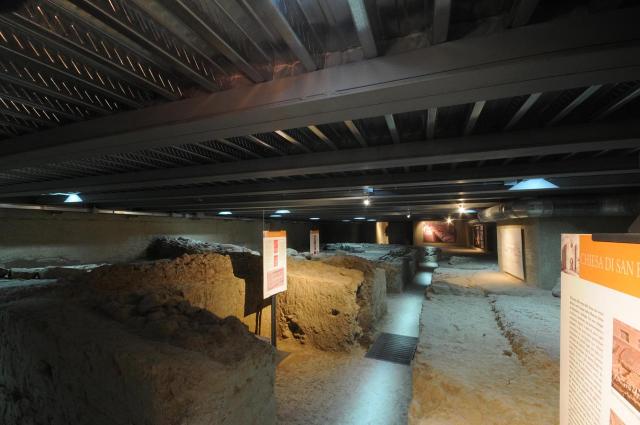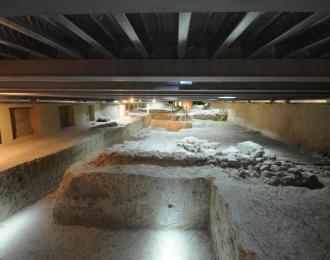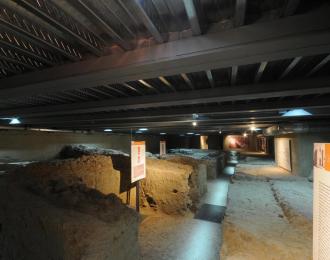Laundry and dye-works
San Bevignate Templar Complex

3rd – 2nd century B.C.
In 2008 - 2009 Restoration work on the San Bevignate Templar Complex brought to light the remains of a fullonica (a Roman era laundry and dyeworks building of a type rarely found) which has been dated to the 3rd to 2nd century B.C. and had been preserved in the basement of the church. This ancient workplace had itself been built on the remains of a suburban domus or villa of which there remains in loco a geometrical mosaic with alternating hourglass and quadrant motifs. The fullonica consists of a row of five adjoining basins (with low walls set into the floor) of different sizes and shapes, inside which there remain visible traces of the pigments used to dye cloth.
Two of these basins are connected and lined with herringbone pattern brickwork whereas the other basins are coated with opus signinum. The bottom of one of these features a circular concavity which may have been used to collect sediments or perhaps more likely served as a vat for treading grapes. There is also a complex network of canalisations in the walls to carry away waste water. The fullonica was used to conduct variety of different operations requiring large quantities of water: washing and dyeing materials and also fulling, or the felting of cloth through a cleaning and shrinking process to make it waterproof.

